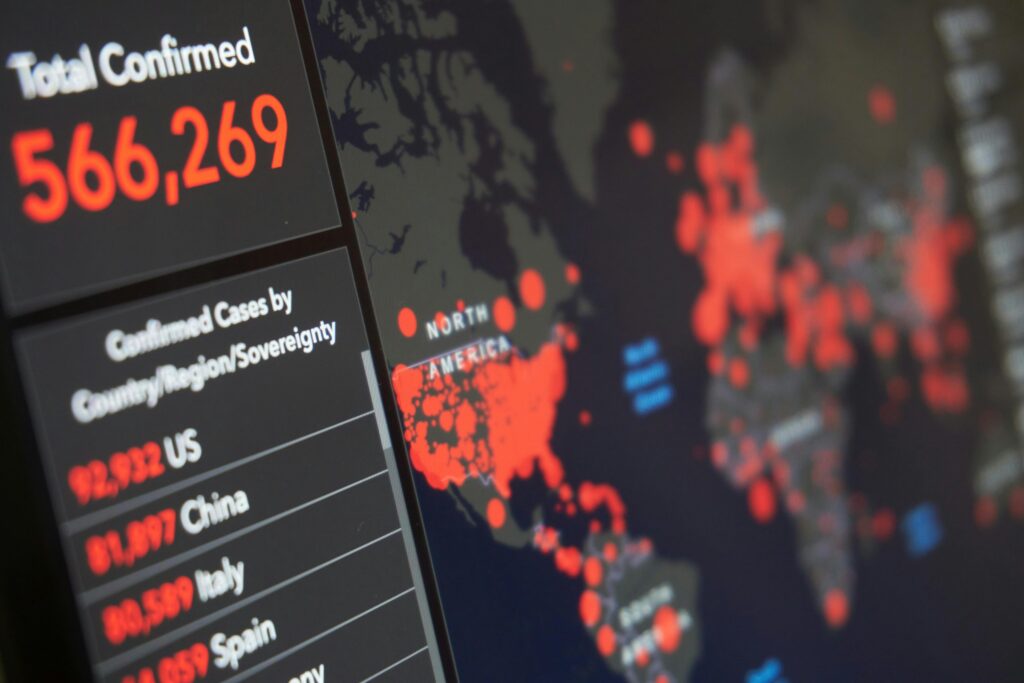Brands in India have hit a sweet spot with influencer marketing! Just look at that booming 12 billion rupee market size. Clearly, there’s tremendous potential to collaborate with online creators and reach relevant audiences here. However, working with the right influencers requires thoughtful strategy in this diverse landscape.
In this guide, we’ll dive into proven methods to identify influencers tailored to your goals, assess their impact, optimise efforts and more. From landscape analysis to campaign blueprints, we’ll equip you to tap into influencer marketing the Indian way! Now, take a seat as we get cracking. First up – understanding what’s stirring up this industry…
The State of India’s Influencer Industry
Looks like influencers are the new celebrities in digital India! There are already a whopping 3.5 to 4 million influencers active on social media currently. From lifestyle to food to fashion, these online creators are capturing India’s booming internet audience across niches.
No wonder influencer marketing has become the shiny new toy for brands here! Picture it – collaborating with relatable personalities to showcase products more authentically. Rather than faceless advertisements, there are real people integrating brands seamlessly into engaging content. Who wouldn’t prefer that?
But it hasn’t been all rosy – the pandemic was a reality jolt. But creative adaptation has been the name of the game. Instead of simply racking up followers, influencers focused on building genuine engagement and value. And formats like IGTV and Reels have turned out to be smart bets too!
Still, some teething issues persist – metrics and regulations remain muddy. But there’s nothing with more maturity and professionalism that can’t be fixed! Agencies bridging creators and brands are already murmuring. Given the vast market size of regional language internet users, vernacular influencers in regional languages present a whole new opportunity as the internet spreads far and wide across India.
So that’s the state of play – an industry that saw some sharp ups and downs but emerged more resilient and wiser. With a bright future as brands realise the immense potential of tapping into influencers to drive awareness and sales here.

Influencer Marketing Landscape
- Platform fragmentation: Presence across Facebook, Instagram, YouTube, ShareChat etc. Requires tailored outreach per platform strengths and users.
- Influencer category mix: With a massive base of over 40 million nano and micro-influencers, the celebrity niche commands the highest payouts. Given the large market size, brands have an expansive pool of influencers to choose from.
- Rising niches: Expanding beyond fashion/lifestyle into specialised interests like gaming, finance, etc, gaining traction.
- Access and demand growth: Increasing disposable incomes and internet adoption enable influencer marketing penetration across Bharat.
Evaluating True Reach And Resonance
- Audience quality analysis: Assess niche relevance and how invested followers are in consuming content vs. vanity metrics alone.
- Genuine engagement indicators: Comments, shares, and conversations signal an advantage over vanity metrics alone.
- Advocacy and relationships: An influencer’s ability to spark real brand interest reveals influence strength.
Campaign Strategy And Risk Mitigation
- Regional complexity navigation: Influencers are active across a fragmented platform mix. Need tailored outreach per platform strengths and cultural nuance.
- Vernacular content resonance: Local languages and cultural references build deeper connections with Bharat audiences vs. generic themes.
- Micro-community traction: Niche influencers around rising interests like gaming, finance, etc, gain loyal followers.
- Risk mitigation
- Content transparency norms
- Anti-fraud protections against fake followers and engagement
- Ongoing performance tracking

Assessing True Impact
- Audience quality analysis: Evaluate niche relevance and how invested followers are in consuming content.
- Genuine engagement indicators: Comments, shares, and conversations signal an advantage over vanity metrics alone.
- Advocacy and relationships: An influencer’s ability to spark real brand interest reveals influence strength.
Crafting Impactful Influencer Campaigns
- Clearly define campaign goals and KPIs aligned to overall marketing strategy and objectives – drive awareness, engagement, leads, and sales. Target millennials or attract new emerging audiences?
- Thoroughly identify and vet relevant influencers based on audience fit, analysing engagement levels beyond just followers and impressions.
- Evaluate whether fans actively comment and share posts plus vertical/topic resonance rates.
- Have open discussions with shortlisted influencers on prospective branded content ideas and interest alignment
- Prioritise extended 2-3 month campaigns over one-off posts for superior ROI from sustained exposure.
- Continually nurture interest with reveal posts, exclusives, participation and tips following the initial launch.
- Provide context to influencers on ideal messaging while granting creative freedom for authenticity.
- Set clear expectations early on regarding deliverables timelines to enable smooth execution.
- One-off announcements may help share news but usually fail to offer the best ROI compared to ongoing campaigns.
- An initial launch post followed by exclusives, involvement and recommendations nurtures interest over months.
- Thoroughly brief influencers on brand, target groups, and preferred assets to guide content creation
- Openly discuss creative preferences but let influencers maintain authenticity and voice.
The key is outlining goals reflecting your overarching strategy, vetting relevant influencers thoroughly, designing extended campaigns allowing sustained engagement across months rather than one-off posts, briefing influencers effectively while allowing creative licence, and continually tracking performance against KPIs to optimise efforts. Given the large market size and reach potential, investing in influencer campaigns tailored to precise goals allows brands to drive impact at scale.
Tracking Performance and Continual Optimisation
At the outset, brands must precisely identify key performance indicators (KPIs) aligned to campaign goals, whether awareness, consideration, leads or sales. Quantifiable metrics provide clarity on success factors.
Measurement dimensions
Reach and impressionsCritical for understanding campaign exposure and scale achieved. It should be tracked across influencer tiers and content formats.
- Engagement rate: Indicates audience receptivity and connection. Compare rates across nano, micro and macro-influencers.
- Clicks and conversions: Vital to quantify bottom-funnel impact on site traffic, leads and sales. Use trackable links and unique promo codes.
- Revenue and ROI: Calculate true return on investment by campaign spend and actual incremental sales driven.

Optimisation levers
Influencer and content optimisation: Analyse niche influencers and content style resonance to double down on what works.
- Messaging and creative adaptation: Tune messaging themes and creatives based on top-performing content analysis.
- Community listening: Actively listen to questions and feedback from followers to refine the approach.
- Ongoing nurture: Drip-feed revelations, exclusives and participation opportunities to sustain interest.
- Assessing brand impact: Look beyond direct sales to shifts in brand perception, visibility and conversations when calculating ROI. But use quantifiable indicators like trackable links and codes to Capture full impact across online and offline touchpoints attribution.
Making the case for higher budgets: Precision tracking and attribution quantifies influencer marketing return on investment. Continual optimisation expands impact over time. Leverage data-backed insights to secure increased budgets from CMOs based on proven efficiency.
Navigating Marketing Challenges in the Digital Age
Standing out from the clutter
- Capturing consumer mindshare: Users face information overload across channels, making grabbing attention extremely difficult. Requires focused messaging highlighting specific benefits.
- Personalised outreach: Leverage data and integrate CRM insights to craft targeted campaigns catering to individual interests and needs.
Understanding the customer journey

- Detailed buyer personas: Go beyond basic demographics to map nuanced motivation and behaviours at each journey stage.
- Stage-specific value proposition: Identify precise pain points and priorities defining the awareness, consideration, conversion and retention phases. Address each with tailored value propositions.
Optimising multi-channel efficiency
- Omnichannel attribution: Use cross-channel tracking to accurately gauge ROI across first and last touchpoints guiding budget allocation.
- Agile reallocation: Stay nimble in shifting budgets to better-performing platforms while maintaining presence across the consumer journey.
Adaptability as a core competency
- Continuous test and iterate process: Keep evaluating new channel opportunities and innovations, maintaining an agile marketing roadmap.
- Organisational alignment: Foster cross-functional coordination for rapid response to market changes and emerging consumer trends.
The Rise of Regional Language Influencer Marketing
As internet adoption expands beyond urban centres, regional language social platforms and influencers are seeing booming growth. Indic language apps like ShareChat already have over 160 million monthly active users. This has fueled the emergence of niche hyperlocal influencers producing snackable, culturally resonating content.
Vernacular influencers adeptly leverage cultural context, local references and mother-tongue communication to build deep audience connections. For instance, reviews of street food across small towns resonate much more with Tier 2 audiences compared to elite restaurant critiques in English. Relatable day-to-day content themes also vary greatly from metro-centric trends. With the massive market size of regional language users, brands must evolve marketing strategies to suit these unique preferences
Brands targeting the next 500 million internet consumers must evolve marketing strategies to suit these unique preferences. Partnering with regional language influencers allows the blending of products seamlessly into locally relevant content. This drives higher engagement and conversions compared to tone-deaf promotions purely translated from English campaigns.
The Social Commerce Opportunity
Influencer marketing has moved beyond just driving awareness and consideration. Hyperlocal influencers are now playing a key role in the fast growing social commerce industry, estimated to hit $16-$20 billion GMV by 2025.
Platforms like Meesho, Bulbul and SimSim have built extensive networks of nano and micro-influencers specialising in specific product niches. Trusted recommendations from these subject experts drive high conversion rates for a range of emerging brands. Their ecosystem solves working capital and logistics challenges for smaller sellers while providing influencers with attractive earnings and flexibility.
As trust in unknown D2C brands remains low, the social proof and transparency from micro-influencer reviews offer a key growth driver. And video-based commerce through platforms like DealShare and Fashinza adds the impact of personalisation and demonstrations to drive conversion rates much higher than e-commerce product listings.
Influencers also provide crucial vernacular language and cultural translation, bridging brands with consumers comfortable predominantly with regional tongues. Relatable local references build credibility lacking in generic translated creatives from metro advertising agencies.
As video-based buying gains traction, creative product use cases and demonstrations develop deeper engagement compared to static product images alone. Influencers act as on-screen hosts, simulating an in-store browsing experience remotely while fostering familiarity and access that unfamiliar brands desperately need.
The Opportunity Ahead
Influencer marketing offers immense potential, still largely untapped by Indian brands so far compared to market size. Adoption continues rising across sectors and smaller towns as digital infrastructure expands and content consumption skyrockets. Furthermore, tactical use cases have expanded from mere endorsements to experiences, advocacy and educational content as consumers increasingly distrust traditional advertising.
With the right strategies to identify and sustain partnerships with authentic influencers, brands can drive awareness, consideration and sales measurably. Initial experiments often form a crucial testing and learning phase to build expertise internally. Allocating even 5-10% of total digital marketing budgets to this channel delivers high-impact engagement. The long-term gains from loyal brand fans, UGC and referral momentum build over time to justify higher allocations to influencer marketing.
Are you looking to kickstart your first influencer campaign targeted to Indian consumers? Reach out for a free consultation on the ideal influencers, content formats and performance-tracking approaches tailored to your brand’s goals. Our influencer marketing agency, India, employs a data-backed methodology to help global and Indian brands successfully navigate the complex but high-growth influencer marketing industry in India.
Frequently Asked Questions
What is the current estimated market size of India’s influencer industry?
The latest industry reports estimate the market size to be around 12 billion Indian rupees or approximately $150 million. This highlights the significant opportunities for brands looking to leverage influencer marketing campaigns targeted at India’s large and young online population.
How many social media influencers are estimated to be currently active in India?
There are an estimated more than 3.5-4 million influencers active on social media platforms in India currently. This massive base ranges from nano to micro to macro influencers.
What are some of the top platforms used by influencers in India?
Key platforms include Facebook, Instagram, YouTube, Twitter, ShareChat and many more. Influencers build their communities across a fragmented mix of platforms. This requires brands to tailor their outreach strategy based on each platform’s user base, strengths and cultural nuances.
How big is the social commerce industry projected to become, with influencers playing a key role?
The social commerce industry in India is projected to hit $16-$20 billion in Gross Merchandise Value (GMV) by 2025. Micro and nano-influencers drive high conversion rates by providing authentic and transparent recommendations and reviews of products in specific niches.
What percentage of total digital marketing spending would you recommend allocating to influencer marketing for brands targeting Indian consumers?
While testing starts small, allocating even 5-10% of total digital marketing budgets to influencer marketing delivers high visible impact. As expertise builds, the long-term gains justify increasing this to 15-20% of spending to drive awareness, consideration and sales measurably over time.





